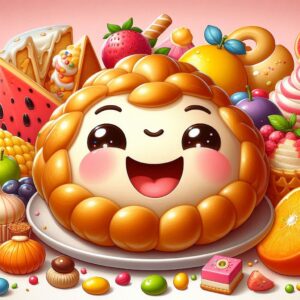毒まんじゅうとは?
「毒まんじゅう」という言葉は、もともと文学や風刺の世界などで比喩的に使われていた表現で、「見た目は魅力的だが、内に毒を秘めたもの」という意味合いを持ちます。しかし、近年ではこの言葉が政治や経済の場面で頻繁に使用されるようになり、特にある事件や発言をきっかけに世間的な注目を集め、流行語としても広く知られるようになりました。
この言葉が大きく注目されたのは、政治的駆け引きの中で登場した「裏取引」や「寝返り」などに関連した文脈でした。ある政党関係者が、対立勢力の政策や立場に突然同調したことに対して、「毒まんじゅうを食わされた」などと表現されたことがありました。これはつまり、相手陣営から表面的には魅力的な条件を提示され、それに乗った結果として、自身の信念や立場を曲げてしまった、あるいは内部から変質させられてしまったことを揶揄した表現です。
このように「毒まんじゅう」は、何らかの利益や誘いに乗ったことによって、後に不利益を被ったり、批判の的になったりする様子を、強い皮肉とともに示す言葉として使われています。たとえば、ある政策に反対していた政治家が、突然その政策を支持し始めたときに、「あの人は毒まんじゅうを食べたのではないか」というようなかたちで、その変節を批判する文脈で登場します。
また、この言葉のインパクトの強さと、どこか風刺的な響きから、インターネットやSNSでも拡散されるようになりました。ときにはミームとして、または風刺画像などと組み合わせて使われることもありました。特に、選挙や政局のタイミングでは頻繁に登場し、そのたびに「誰が毒まんじゅうを食べたのか」が注目されるようになったのです。
近年の政治においては、信念や立場を貫くことが評価される一方で、現実的な妥協や連携も求められる場面があります。そのなかで、「毒まんじゅう」という言葉は、妥協が裏切りに見えてしまうような状況や、人々の不信感が高まっている社会情勢を象徴するキーワードとなっています。つまり、この言葉が流行語として広まった背景には、政治や組織における信頼関係の揺らぎや、情報の透明性に対する不満といった、現代的な課題が反映されているといえるのです。
「毒まんじゅう」は、見えざる力や裏の取引、そして本音と建前の間で揺れる人間関係を鋭く切り取る言葉として、今後も注目され続ける可能性があります。その意味において、単なる一時的な流行語ではなく、社会の本質を映し出す言葉として語り継がれていくかもしれません。
The term “poison bun” was originally a figurative expression used in literature and satire, with the connotation of “something that looks attractive on the outside but has poison inside. In recent years, however, the word has come to be used more frequently in political and economic situations, and one incident or remark in particular has brought it to public attention and made it widely known as a buzzword.
The term gained significant attention in the context of “backroom deals” and “turnabout” that appeared in political bargaining. A political party official was once described as having been “fed a poisoned manju” for suddenly aligning himself with the policies and positions of the opposing party. This is a derogatory term for the fact that a person was offered superficially attractive conditions by the opposing camp and, as a result of accepting these conditions, either bent his or her own beliefs and positions or was perverted from the inside.
Thus, “poisoned manju” is used with strong irony to describe how a person who accepts some benefit or invitation is later disadvantaged or becomes the target of criticism. For example, when a politician who had opposed a certain policy suddenly becomes a supporter of that policy, it appears in the context of criticizing the change, in the form of “He must have eaten poisoned manju.
Also, because of the word’s strong impact and somewhat satirical sound, it began to spread on the Internet and social networking sites. Sometimes it was used as a meme or in combination with satirical images. In particular, it appeared frequently at the timing of elections and political situations, each time drawing attention to “who ate the poisoned manju?
In recent politics, while standing up for one’s beliefs and positions is highly valued, there are also situations where pragmatic compromise and cooperation are required. In this context, the term “poison manju” has become a key word symbolizing situations in which compromise is seen as betrayal and the social climate in which people are increasingly distrustful. In other words, the word’s popularity as a buzzword reflects contemporary issues such as shaky trust in politics and organizations and dissatisfaction with the transparency of information.
Poisoned manju” may continue to attract attention in the future as a term that sharply captures the invisible power, underhanded dealings, and human relationships that waver between true and false intentions. In this sense, it is not just a temporary buzzword, but a word that may be passed on to future generations as a reflection of the essence of society.
AIが描いた「毒まんじゅう」






コメント